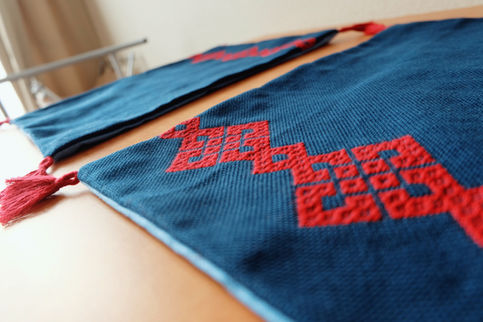Create Your First Project
Start adding your projects to your portfolio. Click on "Manage Projects" to get started
Kogin-zashi Diamond Placemats
Project type
Hand Embroidery
While living in Japan, I discovered Kogin-zashi, a traditional reinforcement stitching technique from the Tsugaru region (modern Aomori Prefecture) with roots in the Edo period. Typically featuring white cotton thread on indigo hemp, Kogin-zashi uses counted stitch embroidery to create intricate patterns reflecting nature and daily life. During the Edo period, peasants could not wear cotton or silk, relying instead on loosely woven hemp textiles that offered little insulation against Northern Japan's harsh winters. To improve warmth and durability, they added hemp threads in intricate designs to high-wear areas like knees and elbows. As trade expanded, cotton became accessible, first as thread and then as woven fabric shortly thereafter, replacing hemp for its superior qualities. Although Kogin-zashi was short-lived due to the arrival of cotton fabrics by trade, many pieces have been preserved and studied, and a small number of artists continue to practice this art form today.
This hand embroidered and hand sewn set of two placemats showcase a Kogin-zashi design in bright red against a deep indigo background. They are embellished with handmade tassels.
Materials:
Cotton embroidery floss, 18 count cotton aida cloth, linen (backing), handmade tassels.

















